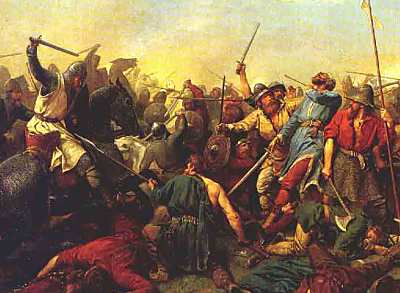Although many people do not know this,the Vikings were actually pagans who had many gods. they lived in a land called Asgard and They often travelled down a bridge of rainbows to visit the human world which was know as Middle Earth.
The Scandinavian legends and myths about ancient heroes, gods, and how the world was created was developed out of the original common mythology of Germanic people and their beliefs. Although the Vikings had many different gods their greatest one was Odin who they believed was the king of the gods.This had many gods and goddesses, who lived in a separate world called
Odin
 |
| A primary source image of Odin with huginn and muninn on his shoulders |
Odin was the Vikings greatest god and was the god of wisdom, magic, poetry and war. He had two black ravens called huginn (thought) and muninn (memory) who would fly across the lands and every day and bring back Odin back information on what was happening throughout his lands. It was said that Odin sacrificed one of his eyes so he could drink from the fountain of wisdom also known as the mimir. Odin had three wives called Fjorgyn, Frigga and Rind who were all earth goddesses.
Thor
Thor was the eldest son of Odin and Fjorgyn and was the god of thunder, the sky, fertility and the law.
Thor is usually portrayed as a large, powerful man with red hair and a red beard and eyes of lightning.
He carries around his hammer which in viking mythologhy is said to be extremly powerful and can only be
used by Thor himself. Thor had three children called Magni modi and Thrud who are all from different mothers.
 |
A painting depicting What the Vikings believed Thor
looked like. |
Loki
Loki is known as the 'wizard of lies' and was one of most evil Gods in Viking mythology. He was the sworn enemy of the Gods and was said to be good looking, but mischievous, cunning and not trustworthy. one of his wives,Sygin, was the complete opposite of Loki and was portrayed as the most loyal and sweet woman on the earth. Some of his children included Hel, ruler of the dead, Jormungand, The World Serpent and The Fenrir Wolf.














